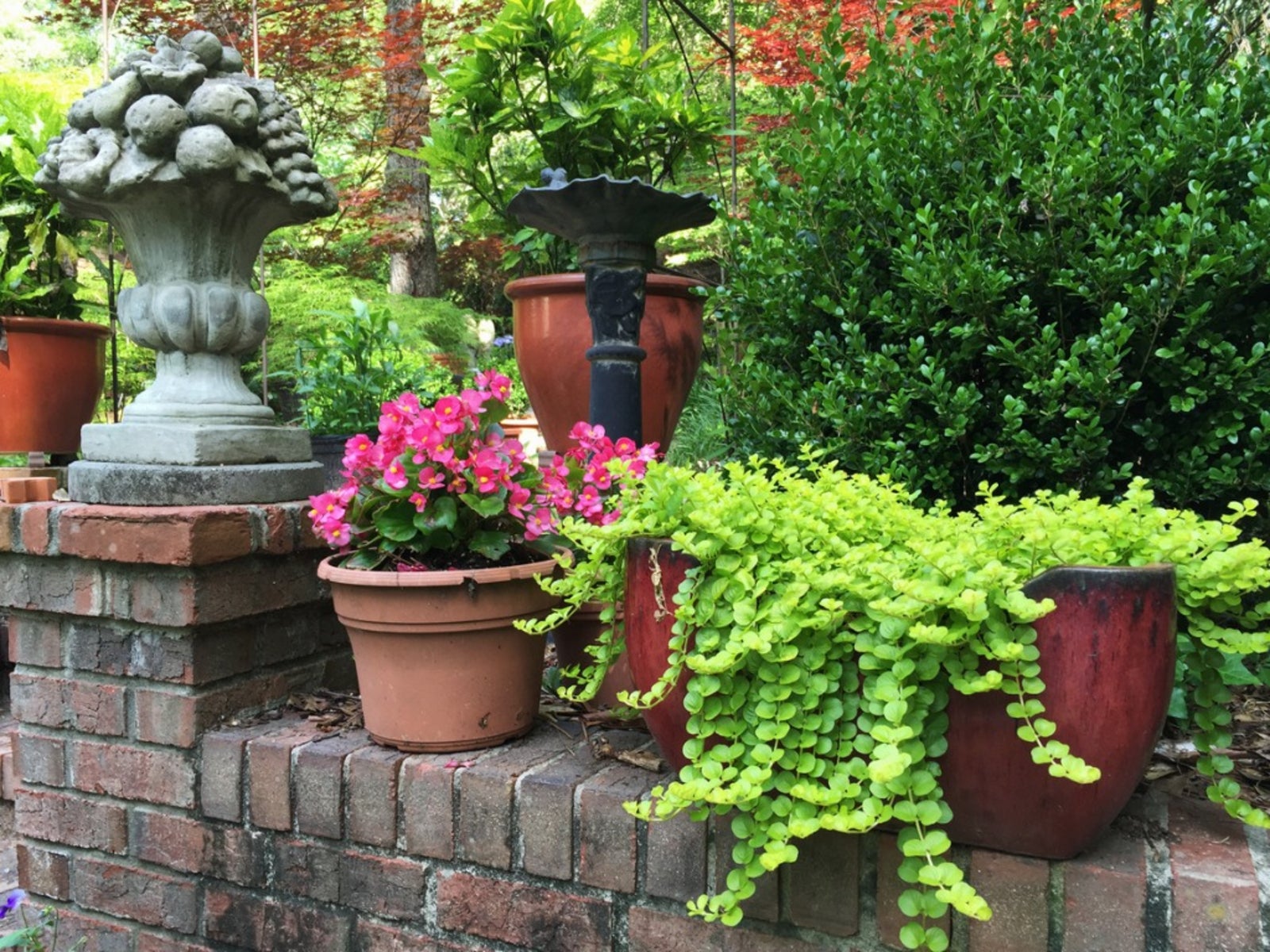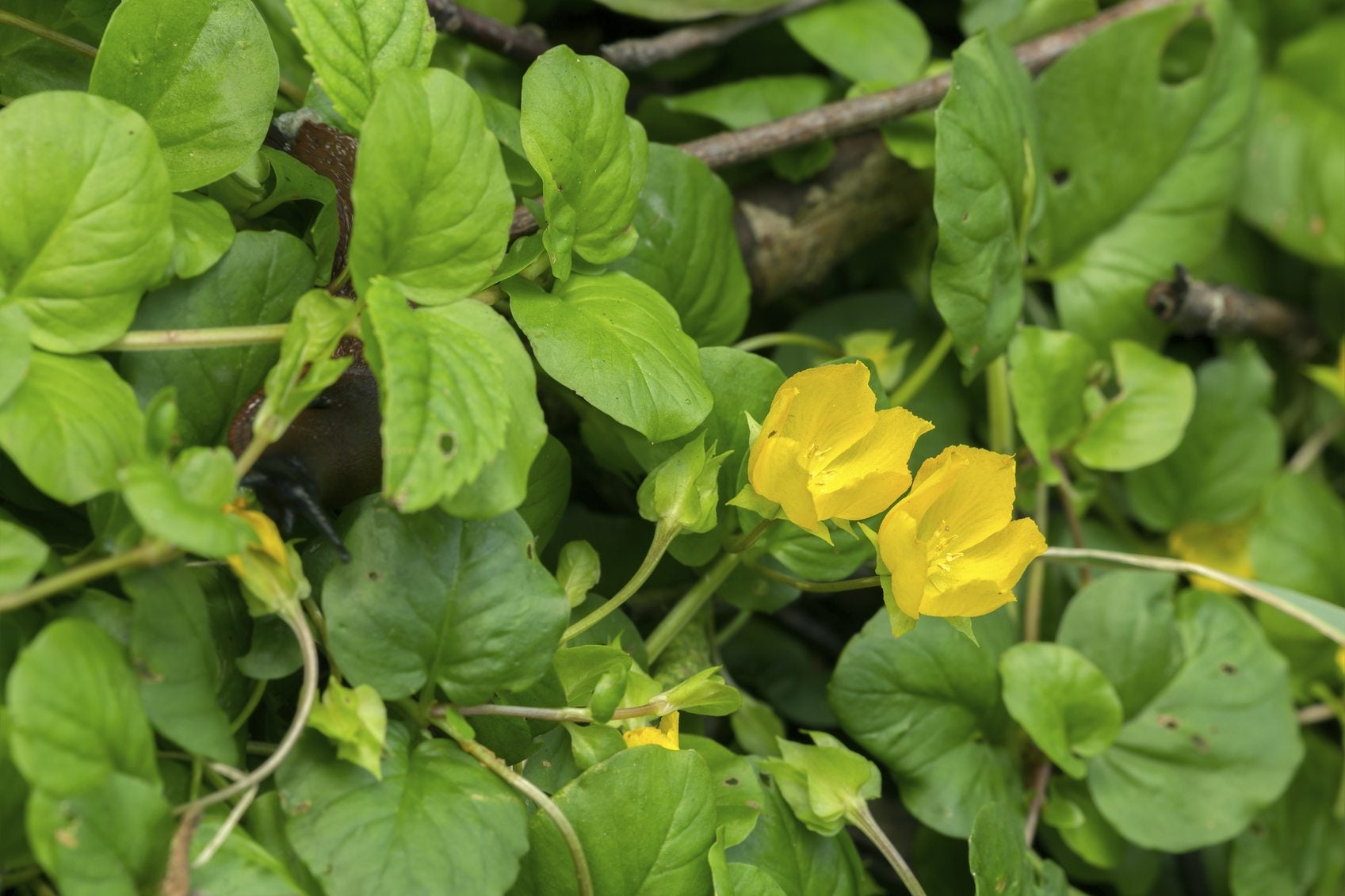Growing Creeping Jenny: Growing Information And Care Of Creeping Jenny Ground Cover

Creeping jenny plant, also known as moneywort or Lysimachia, is an evergreen perennial plant belonging to the Primulaceae family. For those looking for information on how to grow creeping jenny, this low-growing plant thrives in USDA zones 2 to 10.
Creeping jenny is a ground cover that works well in rock gardens, between stepping stones, around ponds, in container plantings or for covering hard to grow areas in the landscape.
How to Grow Creeping Jenny
Growing creeping jenny is relatively easy. Before planting creeping jenny, check with your local extension office to be sure that it is not restricted in your area due to its invasive nature. Creeping jenny is a hardy plant that will thrive in full sun or shade.
Purchase plants from nurseries in the spring and choose a site, in the shade or sun that drains well. Space these plants 2 feet (.6 m.) apart, as they grow rapidly to fill in empty areas. Do not plant creeping jenny unless you are prepared to deal with its rapidly spreading habit.
Care of Creeping Jenny Ground Cover
Once established, creeping jenny plant requires very little up keep. Most gardeners prune this fast-growing plant to keep its horizontal growth under control. You can also divide the plant for better air circulation or to control spreading in early spring. Creeping jenny requires regular water and does well with a little organic fertilizer when first planted. Apply mulch or organic compost around plants to help with moisture retention.
What Is the Difference Between Creeping Charlie and Creeping Jenny?
Sometimes when people are growing creeping jenny plant, they mistakenly think it's the same thing as creeping charlie. Although they are similar in many ways, creeping charlie is a low-growing weed that often invades lawns and gardens, while creeping jenny is a ground cover plant that is, more often than not, a welcome addition to the garden or landscape.
Creeping charlie has four-sided stems that grow up to 30 inches (76.2 cm.). The roots of this invasive weed form nodes where the leaves join the stem. Creeping charlie also produces lavender flowers on 2-inch (5 cm.) spikes.
Gardening tips, videos, info and more delivered right to your inbox!
Sign up for the Gardening Know How newsletter today and receive a free copy of our e-book "How to Grow Delicious Tomatoes".
Most varieties of creeping jenny, on the other hand, reach a mature height of 15 inches (38 cm.) with yellow-green, coin-like foliage that turns bronze in the winter and has inconspicuous flowers that bloom in early summer.
-
 Zinnias On Repeat: 10 Glorious Cut-And-Come-Again Varieties For Endless Summer Bouquets
Zinnias On Repeat: 10 Glorious Cut-And-Come-Again Varieties For Endless Summer BouquetsThese zinnia varieties keep giving all summer, making them the perfect choice for dedicated cutting gardens – or just the occasional homegrown bouquet.
By Ellen Wells
-
 Create A Romantic Garden Straight Out Of Bridgerton: Regency Era Romance In Your Garden
Create A Romantic Garden Straight Out Of Bridgerton: Regency Era Romance In Your GardenTry some romantic garden ideas straight out of Bridgerton. Flowers and gardens in the Regency era were lush and charming and you can get the same look!
By Bonnie L. Grant
-
 Container Grown Creeping Jenny: Caring For Creeping Jenny In A Pot
Container Grown Creeping Jenny: Caring For Creeping Jenny In A PotCreeping Jenny is a versatile ornamental plant that provides pretty foliage that “creeps” along and spreads to fill in spaces. It can be aggressive and invasive, though, so growing creeping Jenny in a pot is a great alternative. Learn how in this article.
By Mary Ellen Ellis
-
 Creeping Jenny Control: What Is The Best Way To Manage Creeping Jenny
Creeping Jenny Control: What Is The Best Way To Manage Creeping JennyUnless you specifically want it as groundcover in a spot where nothing else grows, you should work on controlling creeping jenny as soon as you spot it. Learn more about how to get rid of creeping jenny in the garden with tips from this article.
By Liz Baessler